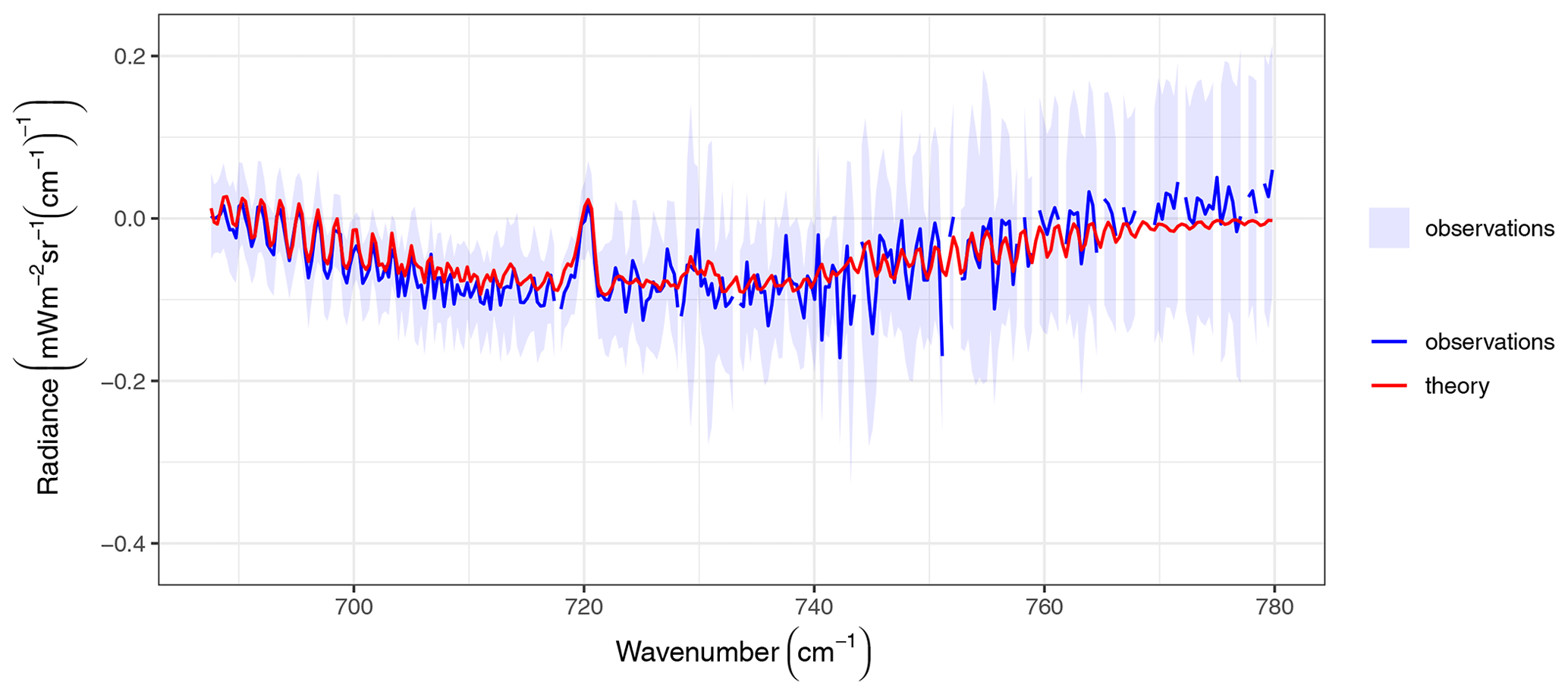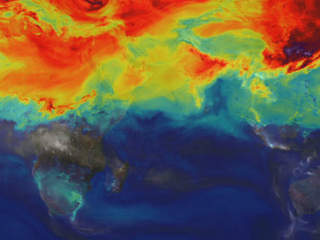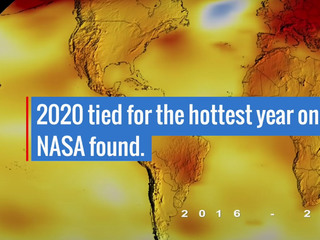News | November 27, 2024
Confirming a Critical Foundation of the Science of Global Warming
For the first time, scientists have directly measured how increasing atmospheric carbon dioxide (CO2) reduces Earth's ability to emit infrared radiation into space, a key driver of global warming. Using data from NASA's Atmospheric Infrared Sounder (AIRS) on the Aqua spacecraft, a team led by João Teixeira at the Jet Propulsion Laboratory (JPL) developed a method to isolate the impact of CO2 on outgoing radiation. Their results, which align closely with theoretical predictions, provide robust experimental confirmation of this core mechanism underlying climate change.
Sunlight warms our planet, and this warming is nearly balanced by the Earth’s emission of energy to space as infrared radiation to cool the planet. It has been well established for decades that global warming is caused by an increase in atmospheric greenhouse gases such as CO2 that reduces the amount of infrared radiation leaving Earth and as such reduces Earth’s cooling. This is the essential mechanism by which increasing CO2 leads to global warming.
While there have been several powerful lines of evidence, from laboratory experiments to theoretical and modeling studies supporting this mechanism, the direct impact of CO2 increase (independently of other processes such as the increase of temperature and water vapor) on the infrared radiation that leaves Earth has never been measured from space.
Recently a team of scientists led by João Teixeira at JPL used data from the AIRS instrument onboard the NASA Aqua spacecraft to directly measure for the first time the detailed effects of CO2 increase on the infrared radiation at the top of the atmosphere. They developed a new methodology to experimentally confirm the effects of CO2 increase by isolating the impact of CO2 through searching for analogues, or measurements of columns of air with similar temperature and water vapor, at different times and locations over a period of several years. They then analyzed the infrared radiation associated with these analogues (that do not differ in temperature and water vapor) at different times when the amount of CO2 was different. This method provides a direct and more precise comparison with theoretical estimates of the impact of CO2.

The figure shows the impact of the annual mean increase of CO2 on different ‘colors’ (wavenumbers) of infrared radiation emitted by the Earth’s atmosphere from theory (in red) and measured by the AIRS instrument (in blue) using the new methodology. The solid blue line shows the average AIRS observations, and the lighter blue shading shows their variability. The observations using this new methodology show excellent agreement with theory, confirming a critical foundation of the science of global warming.
AIRS flies onboard NASA's Aqua spacecraft and is managed by NASA's Jet Propulsion Laboratory in California under contract to NASA. JPL is a division of the California Institute of Technology.
Reference: Teixeira, J., Wilson, R. C., and Thrastarson, H. Th., 2024: Direct observational evidence from space of the effect of CO2 increase on longwave spectral radiances: the unique role of high-spectral-resolution measurements. Atmos. Chem. Phys., 24, 6375–6383. https://doi.org/10.5194/acp-24-6375-2024.






